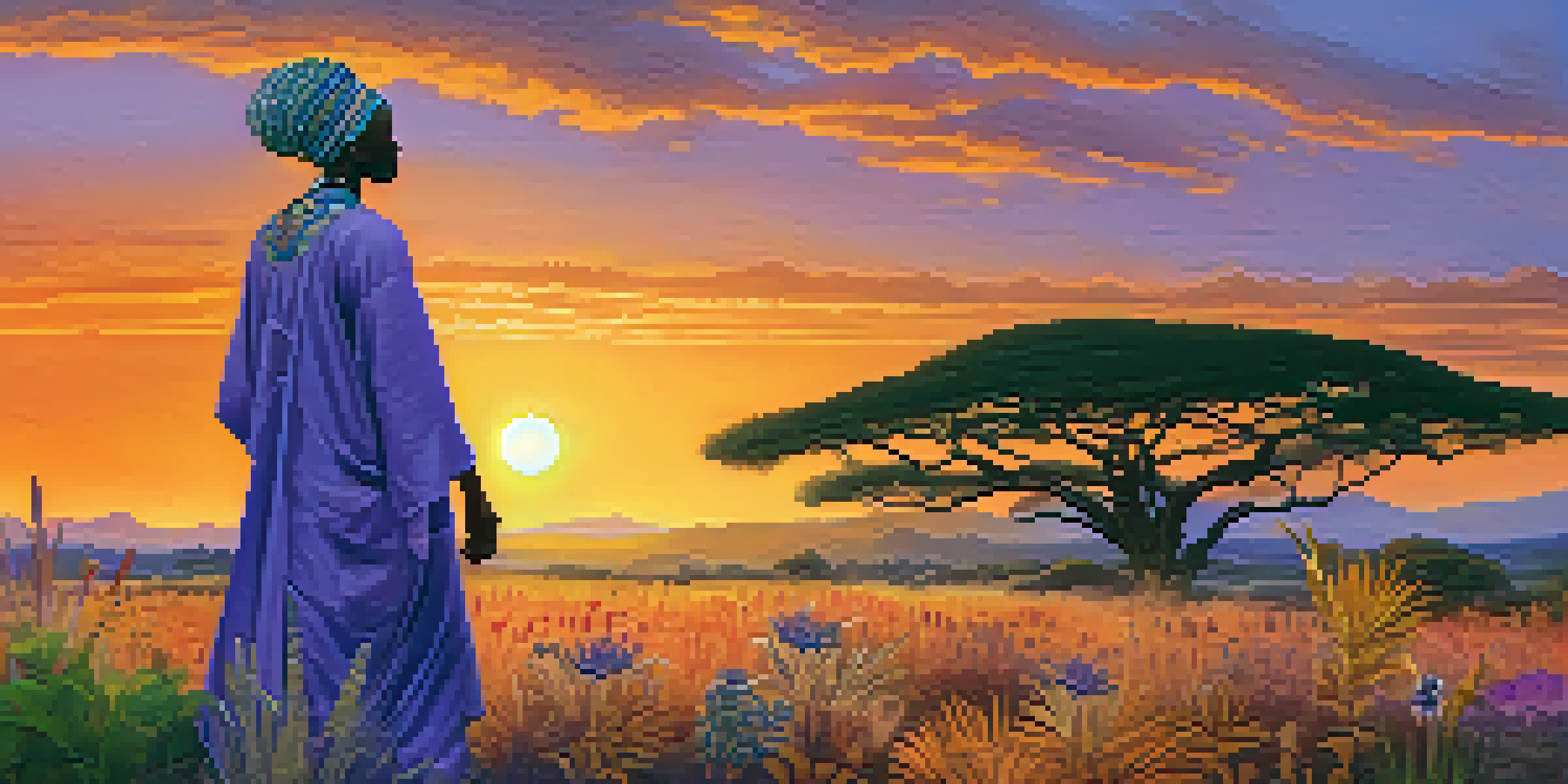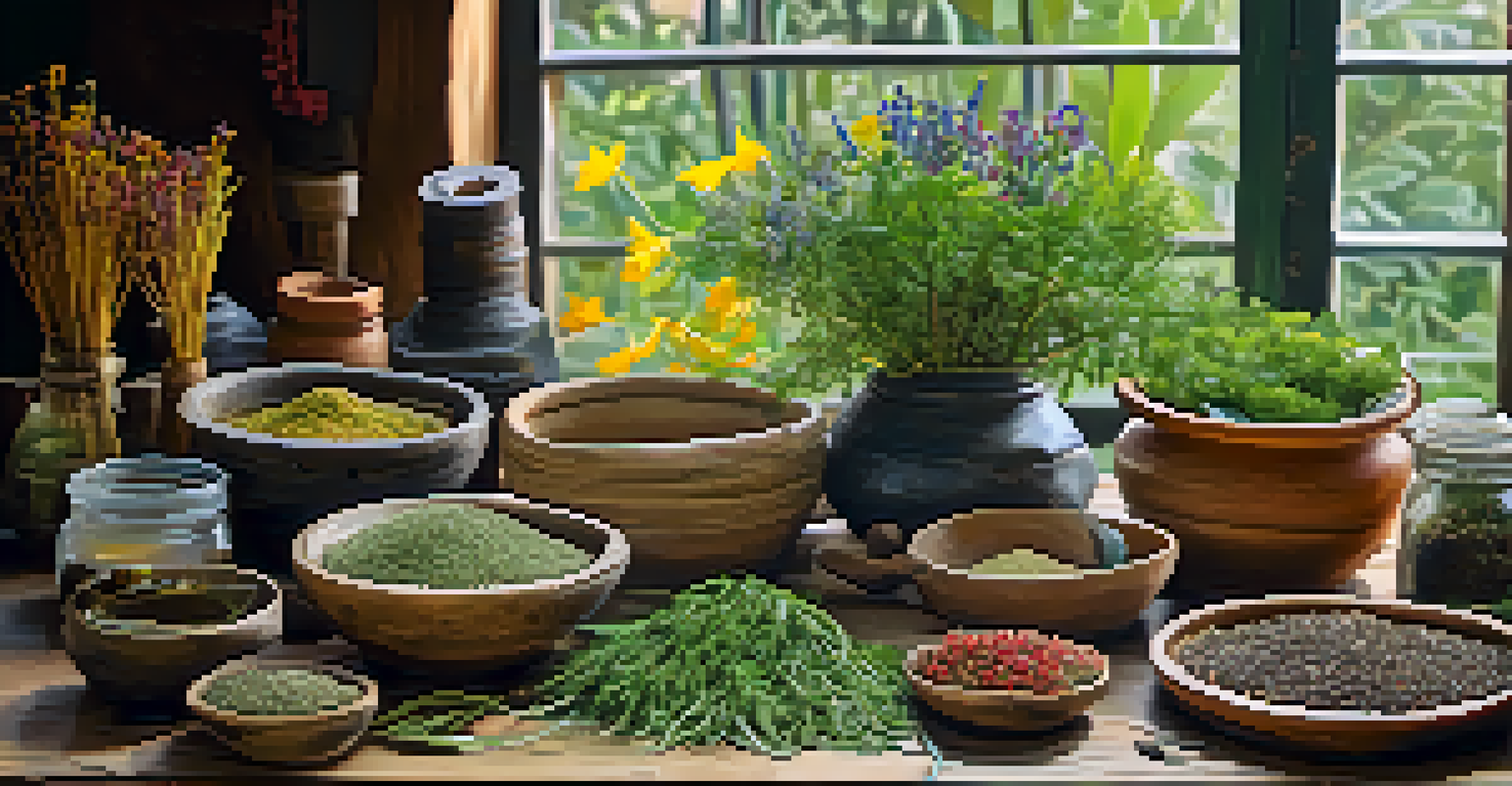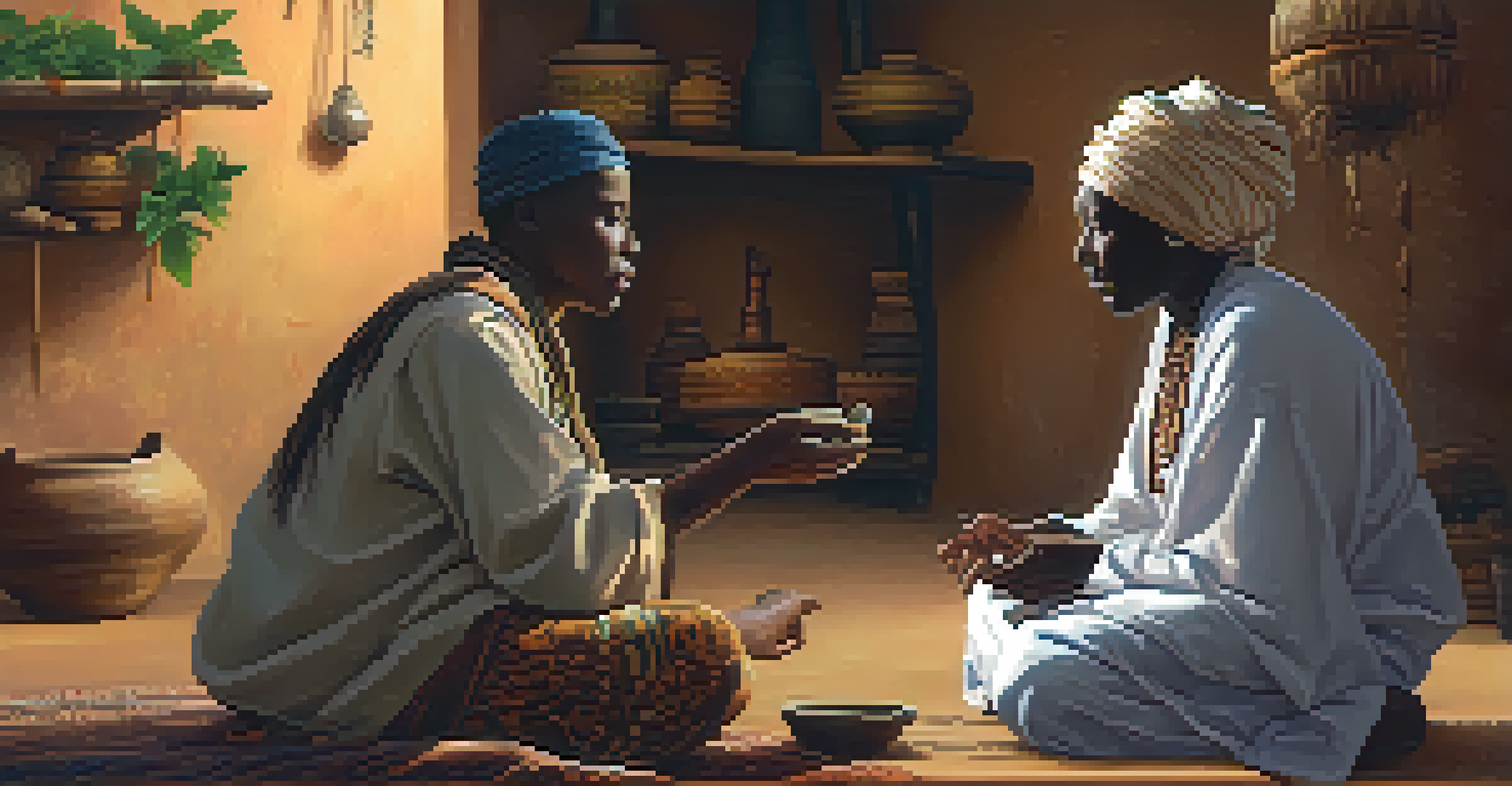Naturopathy in Africa: Diverse Healing Practices and Beliefs

Understanding Naturopathy: An African Perspective
Naturopathy, a holistic approach to health, emphasizes natural healing methods. In Africa, this philosophy is deeply rooted in cultural traditions and indigenous knowledge. It combines herbal medicine, spiritual practices, and dietary guidelines tailored to individual needs.
The greatest wealth is health.
Across the continent, various communities have developed unique naturopathic practices. For example, traditional healers often use plants and minerals found in their local environment, drawing on centuries of wisdom passed down through generations. This localized approach ensures that treatments are effective and resonate with the beliefs of the people.
Ultimately, understanding naturopathy in Africa means recognizing the intricate relationship between health, culture, and nature. This interconnectedness shapes how individuals perceive wellness and healing, making it essential to appreciate these diverse practices.
The Role of Traditional Healers in African Naturopathy
Traditional healers, often referred to as 'sangomas' or 'inyanga,' play a pivotal role in the practice of naturopathy in Africa. They are not only medical practitioners but also spiritual guides and community leaders, deeply respected for their knowledge. Their training often includes years of apprenticeship and a profound understanding of local flora.

These healers utilize a variety of methods, including herbal remedies, rituals, and divination, to diagnose and treat ailments. For instance, a sangoma might prescribe a specific herb to address physical symptoms while also leading a spiritual ceremony to restore balance. This dual approach highlights the holistic nature of their practice.
Naturopathy Blends Tradition and Nature
In Africa, naturopathy combines herbal medicine, spiritual practices, and cultural traditions to promote holistic health.
Moreover, the relationship between a healer and their patient is built on trust and mutual respect. Patients often return to their healers for guidance not only in times of illness but also for general well-being, illustrating the importance of these figures in maintaining communal health.
Herbal Medicine: Nature’s Pharmacy in Africa
Herbal medicine is a cornerstone of naturopathy in Africa, with thousands of plants used for their therapeutic properties. Each region boasts its own set of medicinal plants, often used in combination to create effective remedies. For example, the Rooibos tea from South Africa is not only a popular beverage but also known for its antioxidant properties.
Herbs are the friend of the physician and the pride of the chemist.
Communities often have extensive knowledge of these plants, passed down through oral traditions. This knowledge includes not only which plants to use but also how to prepare and administer them effectively. Such expertise ensures that remedies are tailored to the specific health needs of individuals.
In recent years, there has been a growing interest in the scientific validation of these traditional remedies. Researchers are beginning to explore the efficacy of various herbal treatments, bridging the gap between ancient wisdom and modern medicine, and highlighting the importance of preserving this knowledge.
Spirituality and Healing in Naturopathy
In many African cultures, spirituality is intricately linked to health and wellness. Naturopathy often encompasses spiritual healing practices, where healers may perform rituals to cleanse negative energy or invoke ancestral spirits. This holistic view of health recognizes that physical ailments can have deeper spiritual roots.
Many patients seek out traditional healers not just for physical illnesses but also for emotional and spiritual support. For instance, a healer may guide an individual through a ritual to help them overcome grief or anxiety, emphasizing the importance of mental well-being alongside physical health.
Traditional Healers are Community Pillars
Traditional healers, respected as both medical practitioners and spiritual guides, play a crucial role in maintaining community health.
This intertwining of spirituality and healing reflects a broader understanding of health that transcends the mere absence of disease. It promotes a sense of community and belonging, showcasing how traditional beliefs continue to shape health practices even in the modern world.
Cultural Variations in Naturopathic Practices
Africa is a continent of immense diversity, and this is reflected in its naturopathic practices. Each culture brings its unique beliefs, methods, and remedies to the table. For example, the use of certain plants or rituals may vary significantly between West African and East African communities.
These cultural nuances are vital for understanding how naturopathy operates within different contexts. They influence everything from the choice of remedies to the manner in which healing traditions are passed down. This rich tapestry of practices illustrates the adaptability and resilience of indigenous knowledge.
As globalization increases, there is both a risk and an opportunity for these practices. While some traditions may be lost, others are being revitalized and adapted, highlighting the dynamic nature of African naturopathy in a changing world.
Challenges Facing Naturopathy in Africa Today
Despite its deep-rooted traditions, naturopathy in Africa faces numerous challenges today. One major issue is the increasing influence of Western medicine, which often overlooks the value of traditional practices. This can lead to a decline in the trust placed in traditional healers and their methods.
Additionally, there are concerns about the sustainability of herbal resources as demand increases. Overharvesting of medicinal plants can threaten biodiversity and the livelihoods of those who depend on these resources. It's crucial to find a balance between utilization and conservation.
Challenges for Herbal Practices Persist
Despite its rich heritage, naturopathy in Africa faces challenges such as the influence of Western medicine and the sustainability of herbal resources.
Furthermore, education and awareness about the benefits of naturopathy are needed to bridge the gap between traditional and modern practices. Promoting awareness can help integrate these approaches, ensuring that the wisdom of indigenous healing continues to thrive alongside contemporary medical practices.
The Future of Naturopathy in Africa: A Holistic Approach
Looking ahead, the future of naturopathy in Africa seems promising, especially as awareness of holistic health continues to grow. There is a rising interest in integrating traditional healing methods with modern healthcare systems, leading to a more comprehensive approach to health. This integration could provide patients with a wider array of treatment options.
Innovative collaborations between traditional healers and healthcare professionals are emerging, fostering mutual respect and knowledge exchange. Such partnerships can enhance the credibility of naturopathic practices while ensuring that valuable traditional knowledge is preserved and respected.

Ultimately, the future of naturopathy in Africa will likely be characterized by a blend of tradition and modernity. By embracing both aspects, the continent can cultivate a health care system that honors its rich heritage while meeting the evolving needs of its people.